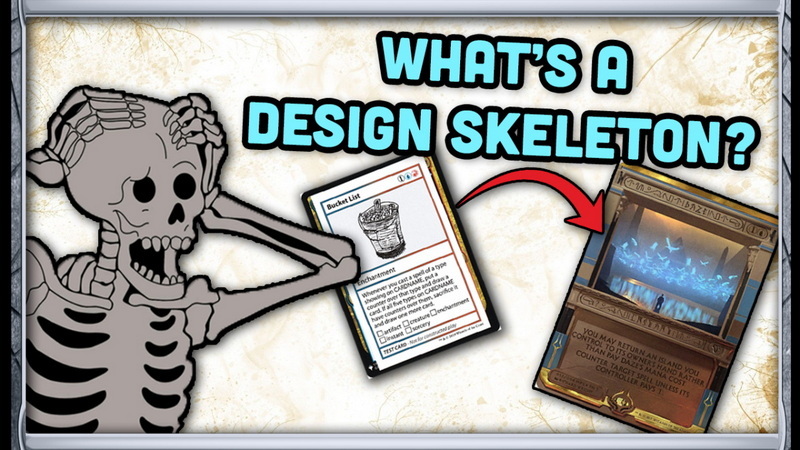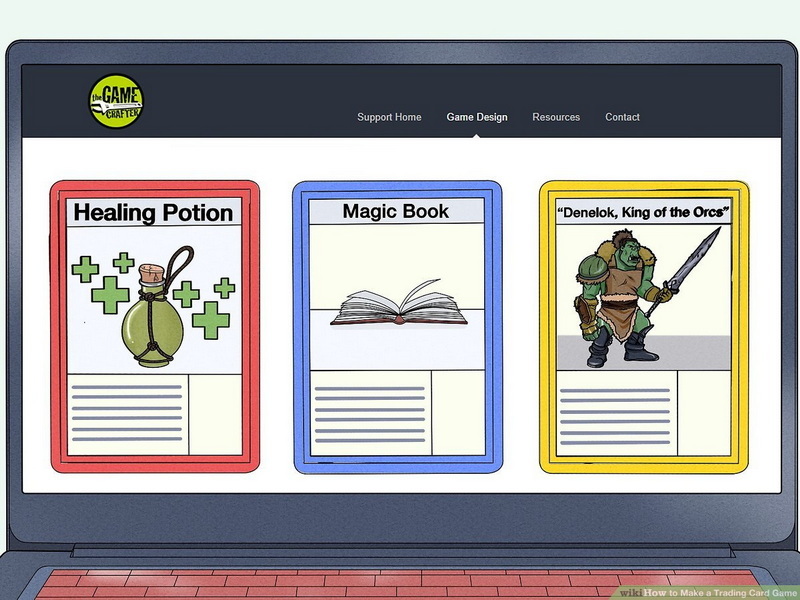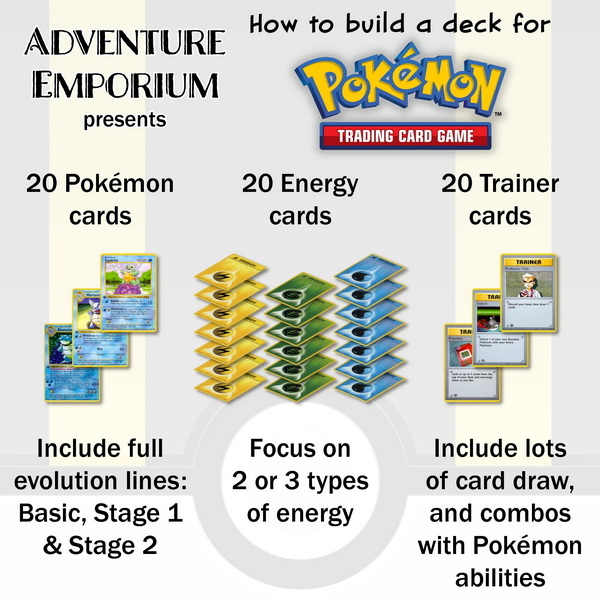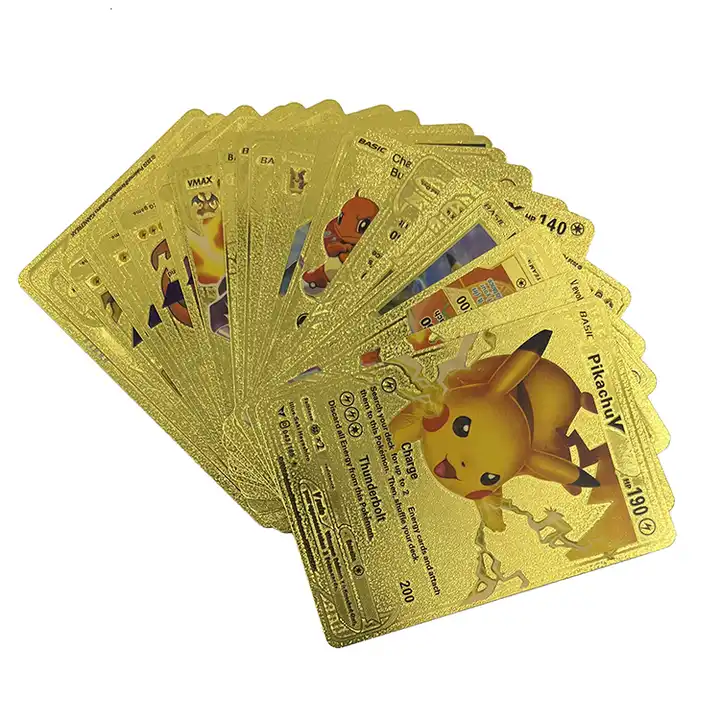Content Menu
● Develop the Concept and Theme of the Game
● Design the Cards and Gameplay Mechanics
● Create Art and Graphics for the Cards
● Develop a Balanced Card Distribution System
● Playtest Your Game Extensively
● Produce the Physical Cards
● Launch and Promote Your Game
● Expand Your Game Over Time
● Conclusion
● Frequently Asked Questions
>> 1. What are the basic steps to make a trading card game?
>> 2. How can I come up with unique card designs for my trading card game?
>> 3. What should I consider when designing gameplay mechanics?
>> 4. How do I effectively playtest my trading card game?
>> 5. What are some marketing strategies for launching my trading card game?
● Citations:
Creating a trading card game (TCG) can be an exciting and rewarding venture. It combines creativity, strategy, and community engagement. Whether you're an experienced game designer or a newcomer eager to explore the world of card games, this guide will walk you through the essential steps to develop your own trading card game from concept to launch.

Develop the Concept and Theme of the Game
The first step in creating a trading card game is to establish a unique concept and theme. This foundational element will guide all subsequent design choices, from card mechanics to artwork.
- Identify Your Genre: Decide whether your game will be set in a fantasy realm, a futuristic universe, or perhaps based on historical events. A clear genre helps in defining the game's aesthetic and mechanics. Popular genres include fantasy, science fiction, horror, and adventure.
- Craft a Narrative: Consider developing a backstory or lore that enriches the gameplay experience. For instance, if your game is set in a fantasy world, think about the different factions, creatures, and magical elements that will populate it. A compelling narrative can draw players into the world you've created and encourage them to invest emotionally in their cards and strategies.
- Unique Selling Proposition (USP): Determine what makes your game stand out from existing TCGs. This could be innovative mechanics, unique themes, or an engaging storyline. For example, consider introducing mechanics that allow for cooperative play between players or unique resource management systems that differentiate your game from others on the market.
Design the Cards and Gameplay Mechanics
Once you have your concept and theme established, it's time to dive into designing the cards themselves and defining the gameplay mechanics.
- Types of Cards: Identify the types of cards that will be included in your game. Common categories include:
- Character Cards: Represent players' avatars or creatures.
- Spell Cards: Allow players to cast spells that can affect gameplay.
- Item Cards: Provide players with equipment or enhancements.
- Event Cards: Introduce random occurrences that can change the course of the game.
- Location Cards: Create specific environments that can influence strategies.
- Gameplay Mechanics: Define how players will interact with these cards. Consider the following:
- Turn Structure: How will turns be organized? Will players draw cards, play cards, or attack during their turns? A well-defined turn structure helps maintain flow and keeps players engaged.
- Win Conditions: What are the goals for players? Is it to reduce an opponent's life points to zero, collect certain cards, or complete specific objectives? Having multiple win conditions can add depth and variety to gameplay.
- Balance and Strategy: Ensure that no single card type is overwhelmingly powerful. Balance is crucial for maintaining competitive play and player engagement. Consider creating a point system for card strength that allows for easy comparison during playtesting.
Create Art and Graphics for the Cards
Visual appeal plays a significant role in attracting players to your trading card game. The artwork should resonate with your theme and enhance the overall experience.
- Hire Artists or Use Design Software: Depending on your budget, you might hire professional artists or use graphic design software to create your card visuals. Platforms like Fiverr or Upwork can connect you with talented artists who specialize in TCG artwork.
- Card Layout: Design a consistent layout for all cards that includes space for artwork, text descriptions, stats, and any special abilities. This consistency helps players quickly understand new cards during gameplay.
- Art Style Consistency: Ensure that all artwork adheres to a unified style that reflects your game's theme. This consistency helps create an immersive experience for players. You may want to create a style guide that outlines color palettes, character designs, and other visual elements.
Develop a Balanced Card Distribution System
A well-thought-out card distribution system is essential for maintaining fairness and excitement in gameplay.
- Rarity Levels: Decide on various rarity levels for cards (e.g., common, uncommon, rare). This adds an element of surprise when players open packs and encourages trading among players looking to complete their collections.
- Balanced Distribution: Ensure that powerful cards are balanced by including weaker counterparts so that no player feels disadvantaged due to luck of the draw. Consider using statistical analysis during playtesting to evaluate how often certain cards are drawn and adjust rarity accordingly.
Playtest Your Game Extensively
Playtesting is one of the most critical phases in developing a trading card game. It allows you to gather feedback on gameplay mechanics and balance.
- Gather Playtesters: Involve friends or members of gaming communities who can provide unbiased feedback on your game. Online platforms like Discord can help you find dedicated gamers interested in testing new TCGs.
- Observe Gameplay: Watch how players interact with your game. Take notes on any confusion regarding rules or mechanics and adjust accordingly. Pay attention to player engagement levels—are they excited about certain strategies or bored by others?
- Iterate Based on Feedback: Use feedback from playtests to refine card abilities, rules, and overall gameplay experience until you reach a satisfying balance. Don't hesitate to make significant changes if something isn't working; flexibility during this stage is key.

Produce the Physical Cards
Once you have finalized your designs and gameplay mechanics through extensive testing, it's time to produce physical copies of your trading cards.
- Choose a Printing Service: Research printing companies that specialize in custom card production. Look for quality materials that can withstand regular handling during gameplay. Companies like The Game Crafter offer print-on-demand services tailored specifically for TCGs.
- Packaging Design: Consider how you want to package your cards. Attractive packaging can enhance the perceived value of your product. Think about including booster packs or starter decks as part of your initial offerings.
Launch and Promote Your Game
With physical cards ready for distribution, it's time to launch your trading card game into the market.
- Create an Online Presence: Build a website or social media pages dedicated to your game where you can share updates, tutorials, and engage with potential players. Use platforms like Instagram or TikTok for visually showcasing your artwork and gameplay videos.
- Attend Gaming Conventions: Showcase your game at conventions where enthusiasts gather. This provides opportunities for direct feedback and community building while also allowing you to network with other creators in the industry.
- Engage with Communities: Participate in online forums related to tabletop games and TCGs to promote your game organically among interested audiences. Websites like Reddit have dedicated communities where you can share progress updates and solicit feedback from potential fans.
Expand Your Game Over Time
After launching your initial set of cards, consider ways to expand your game further:
- Expansion Packs: Introduce new sets of cards periodically that add fresh content without requiring new players to start over completely.
- Organized Play Events: Host tournaments or casual play events at local gaming stores or online platforms to keep player interest high while fostering community engagement.
- Digital Versions of Your Game: Explore creating digital versions of your TCG for platforms like Steam or mobile devices. Digital adaptations can reach wider audiences while maintaining core gameplay elements.
Conclusion
Creating a trading card game is a multifaceted process that requires creativity, strategic planning, and community engagement. From developing an engaging concept to playtesting extensively before launch, each step contributes significantly to crafting an enjoyable gaming experience for players. By following these guidelines, you can transform your ideas into a tangible product that resonates with fans of trading card games while providing endless hours of entertainment.

Frequently Asked Questions
1. What are the basic steps to make a trading card game?
Creating a TCG involves several key steps:
- Develop a unique concept and theme.
- Design various types of cards.
- Establish gameplay mechanics.
- Create visually appealing artwork.
- Playtest extensively for balance.
- Produce physical cards.
- Launch and promote your game.
2. How can I come up with unique card designs for my trading card game?
To create unique card designs:
- Explore various themes not widely covered in existing games.
- Draw inspiration from mythology, literature, or pop culture.
- Ensure designs align with gameplay mechanics while being visually appealing.
3. What should I consider when designing gameplay mechanics?
When designing gameplay mechanics:
- Define turn structure clearly.
- Establish win conditions that are engaging.
- Ensure balance between different types of cards.
- Encourage strategic decision-making among players.
4. How do I effectively playtest my trading card game?
To effectively playtest:
- Gather diverse groups of testers.
- Observe their interactions with the game closely.
- Collect feedback on rules clarity and enjoyment.
- Make iterative adjustments based on observations before finalizing designs.
5. What are some marketing strategies for launching my trading card game?
Effective marketing strategies include:
- Building an online presence through social media.
- Attending gaming conventions for visibility.
- Engaging actively with relevant communities online.
Citations:
[1] https://chronicsportscards.com/blogs/the-chronicle/how-to-create-a-trading-card-game-a-step-by-step-guide
[2] https://remptongames.com/2023/09/23/from-concept-to-card-how-to-design-an-epic-tcg-set/
[3] https://www.vanityslabs.com/blogs/blog/how-to-make-a-trading-card-game
[4] https://specialonecards.com/trading-card-faqs-your-top-questions-answered/
[5] https://www.reddit.com/r/tabletopgamedesign/comments/1cb4a99/questions_about_tcg/
[6] https://www.reddit.com/r/tabletopgamedesign/comments/1dvshs0/creating_my_own_trading_card_game/
[7] https://www.instructables.com/How-to-make-your-own-TCG-Trading-Card-Game/
[8] https://www.youtube.com/watch?v=JGrHenqD1iQ
[9] https://www.steelcitycollectibles.com/trading-card-faqs
[10] https://cdn.shopify.com/s/files/1/0555/5827/5271/files/v4-460px-Make-a-Trading-Card-Game-Step-18_jpg.webp?sa=X&ved=2ahUKEwjY1obmrcWKAxWALtAFHbRgMssQ_B16BAgMEAI
































